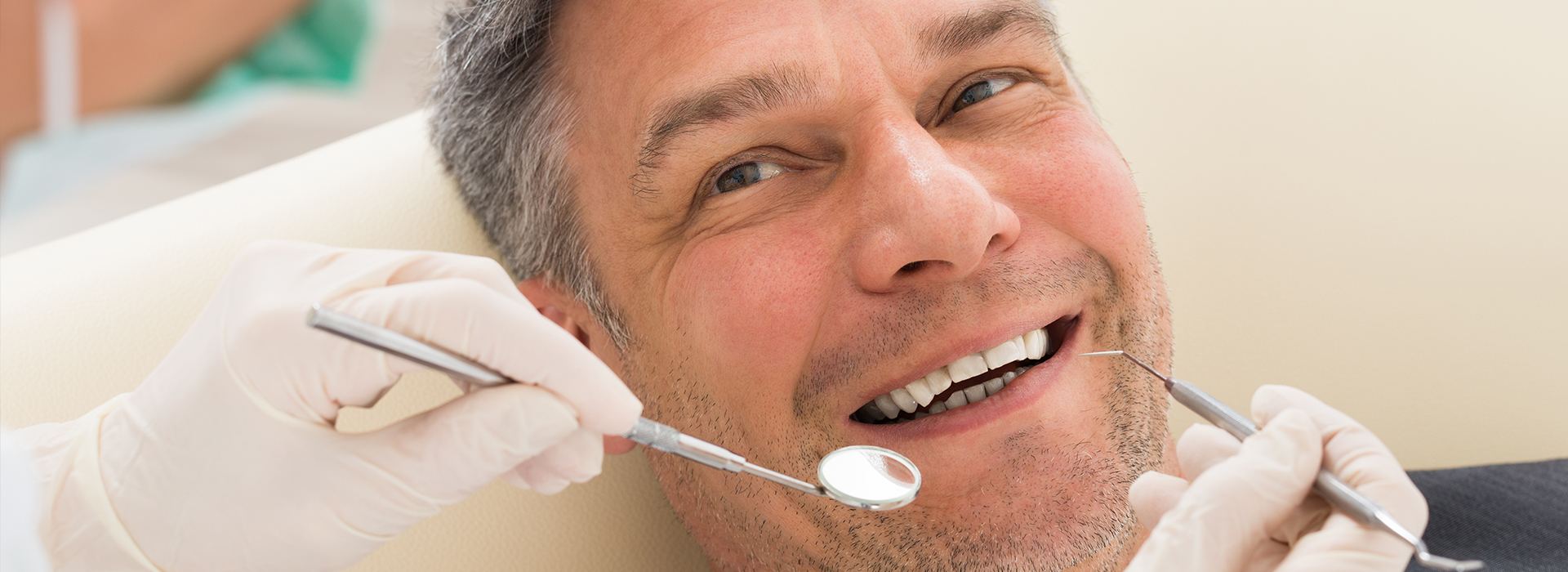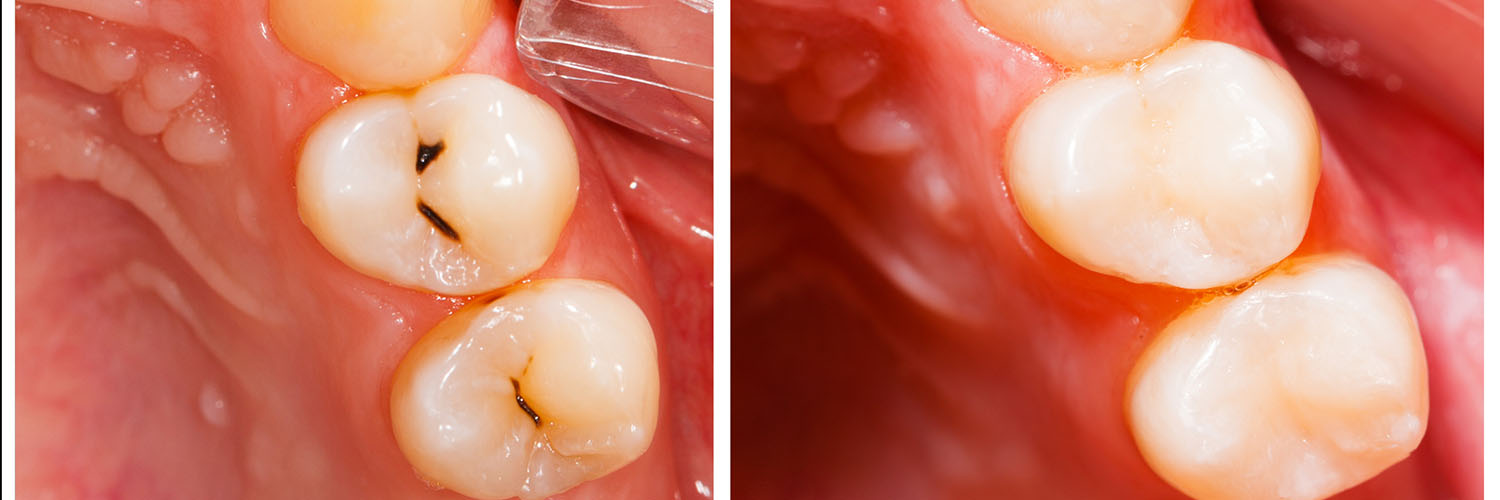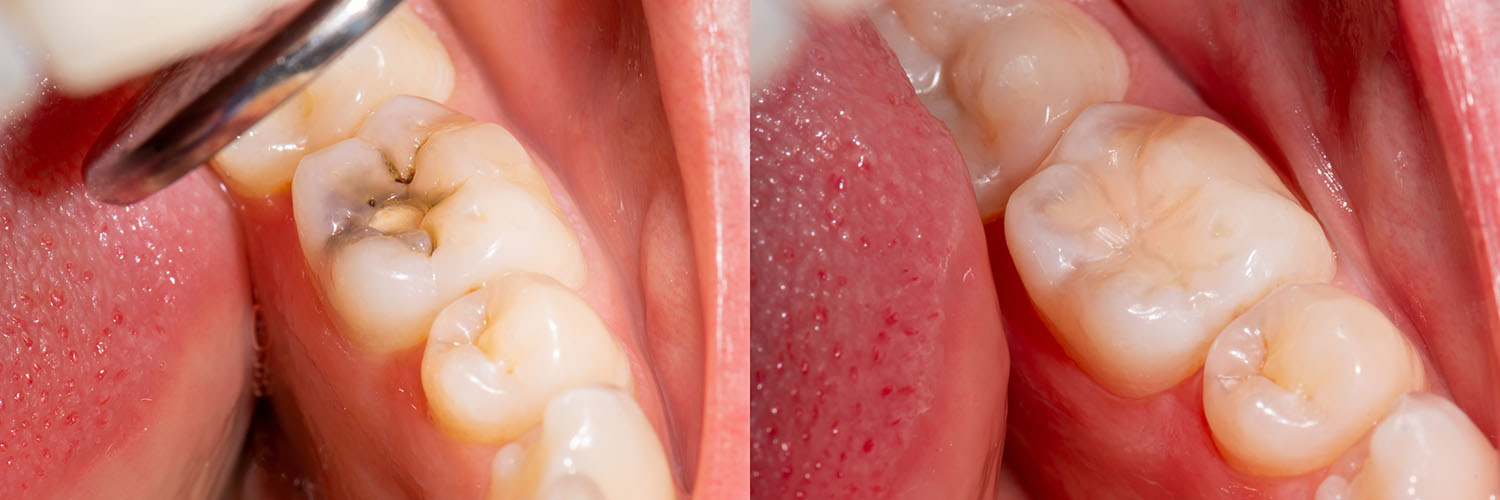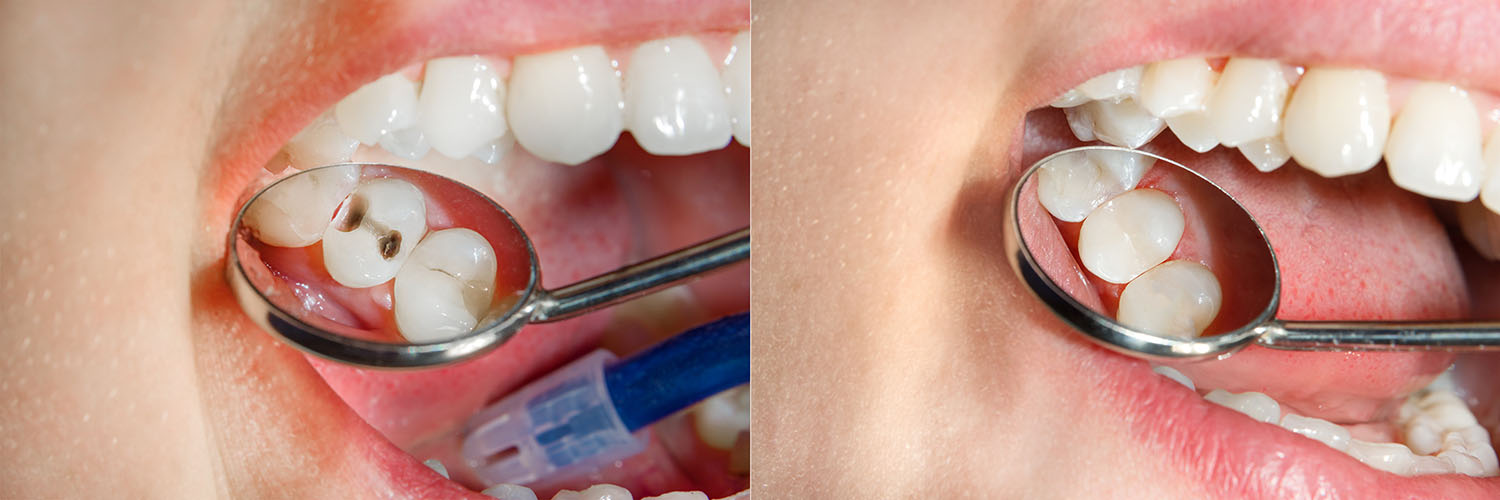
A filling does more than fill a hole — it rebuilds a tooth so you can bite, chew, and speak comfortably while protecting the inner layers from further damage. When decay or minor fracture removes healthy enamel and dentin, a properly placed restoration restores the tooth’s shape and strength, preventing pain and stopping disease from progressing deeper into the tooth.
Tooth decay remains one of the most common oral health concerns across all ages. Because cavities develop gradually, timely treatment with a durable restoration prevents more invasive procedures later, such as root canals or crowns. Addressing decay early preserves natural tooth structure and contributes to long-term oral health.
At Lesley Holloway the Dentist, we emphasize conservative, evidence-based restorative care. Our goal is to return teeth to comfortable function with materials and techniques that respect both the tooth’s health and your smile’s appearance. We’ll explain each step so you know what to expect from diagnosis through final polish.
Humans have attempted to repair damaged teeth for millennia, but modern restorative dentistry has advanced dramatically in the past century. Materials once chosen primarily for durability are now evaluated for biocompatibility, strength, and how well they mimic the look of natural teeth.
Today’s options allow clinicians to balance appearance with resilience. The materials and methods available now give patients long-lasting results with a focus on preserving healthy tooth structure whenever possible.
We tailor each treatment to the individual — considering the location of the cavity, the amount of tooth remaining, cosmetic preferences, and how the tooth functions in your bite. Minimally invasive preparation and precise placement techniques help conserve tooth structure and improve the longevity of the restoration.
Comfort is central to our care. We use gentle anesthesia techniques and modern instruments to limit vibration and noise, and we’ll discuss options to help you feel at ease during treatment. Clear explanations and step-by-step communication are part of how we make restorations predictable and comfortable.

Not all fillings are the same. Material science has expanded the choices available to restore teeth, and selecting the right one involves weighing durability, appearance, and where the tooth sits in the mouth. Posterior molars that handle heavy chewing may prioritize strength, while front teeth typically require a material that closely matches natural enamel.
Advances in adhesive dentistry allow tooth-colored restorations to bond directly to remaining tooth structure. That bond can help strengthen the repaired tooth and reduce the amount of healthy tissue that needs to be removed during preparation, an important benefit for long-term tooth preservation.
We’ll review the advantages and limitations of each option and recommend a material based on clinical need and your goals. Below are commonly used restorative materials and what they offer.
Composite resins combine resin and glass filler to recreate the translucency and shade of natural teeth. They are a versatile choice for both front and back teeth in many situations. Bonding creates a tight seal and minimizes removal of healthy tooth structure, and composites can be polished to a lifelike finish.
Amalgam has a long track record for durability in large posterior restorations. While not tooth-colored, amalgam remains an option where long-term wear resistance and strength are the primary concerns. Placement is generally straightforward and reliable for heavy-load areas.
Glass ionomers chemically bond to tooth structure and slowly release fluoride, which can help protect the treated area. Because they are less wear-resistant than some alternatives, they are frequently used in baby teeth, near-the-gumline repairs, or as a temporary or transitional restoration in complex cases.
Ceramic restorations are crafted outside the mouth and then bonded into place. They offer excellent color stability and high wear resistance, making them a strong cosmetic option for moderate to large defects where a direct filling might not be ideal.
Gold is less commonly used today but remains one of the most durable materials for restorations. It performs well over decades, resists corrosion, and is gentle on opposing teeth. Because it’s a noticeable metal, aesthetic considerations usually limit its use to posterior teeth.

Treatment begins with a careful evaluation — visual inspection, diagnostic X-rays when appropriate, and discussion of your symptoms and dental history. The goal is to identify the extent of decay and plan a restoration that preserves as much healthy tooth as possible.
On the day of treatment, local anesthesia is typically used to ensure comfort. Modern anesthetic techniques allow precise numbness of the area without unnecessary effects, and we’ll confirm you’re comfortable before proceeding. If you prefer additional calm during care, ask about sedation options during scheduling.
After anesthesia takes effect, decayed and weakened tooth structure is removed using a gentle rotary instrument, laser, or air abrasion depending on the case. The cavity is shaped to accept the chosen material, and if needed, liners or bases are placed to protect the pulp and provide a secure foundation.
Placement differs by material: tooth-colored composites are placed incrementally and cured with a light, glass ionomers are set and chemically bonded, while indirect restorations like ceramics are fabricated in a lab and cemented at a second appointment. Final polishing and meticulous bite adjustment are completed so the restoration looks natural and feels comfortable.
It’s normal to experience temporary numbness for an hour or two after anesthesia. Until sensation returns, avoid chewing or eating hot foods to prevent accidental soft-tissue injury. We’ll let you know when it’s safe to resume normal eating.
Mild sensitivity to temperature or pressure is common in the days following placement, especially with larger restorations. This usually subsides as the tooth adjusts; over-the-counter pain relievers and avoiding very hard or sticky foods initially can help manage any short-lived discomfort.
Occasionally, bite adjustments are necessary once the anesthetic wears off. If your bite feels high or you notice persistent soreness when chewing, please contact our office so we can make a quick and comfortable correction. Prompt attention prevents excessive wear or strain on the restoration and surrounding teeth.
Good daily oral hygiene — brushing with fluoride toothpaste and flossing — supports the longevity of fillings. Regular professional exams and cleanings allow us to monitor restorations and catch small issues early, so a restoration can often be maintained rather than replaced.
Fillings are designed to last, but they do not last forever. Over time, wear, recurrent decay at the margins, or fractures can compromise a restoration. Routine dental examinations include assessment of the edges, surface integrity, and how the restored tooth functions in your bite.
If a restoration shows signs of breakdown — sensitivity that persists, a visible crack, roughness, or staining along the margin — early evaluation can determine whether a simple repair or replacement is needed. Catching changes early often allows for a more conservative solution.
Preventive care is the best way to extend the life of restorations. In addition to home oral hygiene, strategies like topical fluoride treatments, dietary guidance to reduce frequent sugar exposure, and targeted cleaning around hard-to-reach areas all help preserve both natural tooth structure and restorations.
Regular visits let us monitor wear patterns and recommend protective solutions such as night guards if clenching or grinding is contributing to premature breakdown. Our focus is keeping your teeth healthy and functional for the long term.

Summary: Dental fillings are a reliable, conservative way to restore teeth affected by decay or minor damage. By selecting appropriate materials and using careful techniques, we restore function, protect the tooth’s interior, and maintain a natural appearance. Regular checkups and good home care help restorations last longer and protect the health of your smile.
If you have questions about fillings or would like to learn which restorative option is best for your situation, please contact us for more information.
A dental filling restores the structure and function of a tooth that has been damaged by decay or a minor fracture. Fillings rebuild the biting surface so you can chew, speak and maintain normal tooth alignment. They also seal the tooth to protect the inner pulp from bacteria and further decay.
Treating cavities early with a filling helps avoid more invasive procedures such as root canal therapy or crowns. Choosing a restoration that preserves healthy tooth tissue supports long-term oral health and tooth longevity. Your dentist will explain the diagnosis and the recommended approach so you understand each step of care.
Several common materials are used for fillings, each with particular strengths and trade-offs. Composite resins are tooth-colored, bond to enamel and dentin, and are often used where appearance matters. Silver amalgam is durable for high-load back teeth, while glass ionomer releases fluoride and can be useful near the gumline or in primary teeth.
Ceramic inlays and onlays are laboratory-crafted options that offer excellent color stability and wear resistance for larger defects, and gold remains a long-lasting alternative for posterior restorations. Material selection depends on the size and location of the cavity, chewing forces, aesthetic goals and the amount of remaining tooth structure. Your clinician will review the advantages and limitations of each material and recommend the best option for your situation.
A typical filling appointment begins with a clinical exam and, if needed, diagnostic X-rays to determine the extent of decay. Local anesthesia is administered to numb the area and ensure comfort, and additional sedation options are available for anxious patients. Decayed or weakened tissue is then removed using rotary instruments, laser or air abrasion, and the cavity is shaped to receive the chosen material.
For direct restorations such as composites, the material is placed in increments and light-cured to build anatomy and strength, then polished for a natural finish. Glass ionomers set chemically and may be used as liners or temporary restorations in select cases. Indirect restorations like ceramic inlays require a lab phase and are bonded at a follow-up appointment, with meticulous bite adjustment to ensure comfort.
Most patients experience little to no pain during a filling because local anesthesia effectively numbs the treated area. You may feel pressure or vibration from instruments, but modern techniques and attention to comfort minimize discomfort. If you have a history of dental anxiety or prefer deeper relaxation, ask about sedation options when you schedule your appointment.
After the anesthetic wears off you might notice temporary sensitivity to cold, heat or pressure for a few days, which typically resolves on its own. Over-the-counter pain relievers and avoiding hard or sticky foods can help manage mild post-treatment soreness. Contact the office if you experience persistent or worsening pain, prolonged numbness, or signs of infection so the situation can be evaluated promptly.
Immediately after a filling you should avoid chewing until numbness has completely worn off to prevent accidental biting of lips or cheeks. If the restoration feels high or your bite feels uneven once sensation returns, call the office to schedule a quick adjustment. Keep up gentle brushing and flossing around the treated tooth, taking care not to disturb temporary materials if they were used.
Mild temperature sensitivity is common and usually fades over days to weeks; persistent or worsening sensitivity warrants an evaluation. Regular dental checkups and cleanings allow your dentist to monitor restorations, catch minor issues early and recommend repairs or replacement if necessary. Maintaining good home care and limiting frequent sugar exposure supports the longevity of both natural teeth and fillings.
The lifespan of a filling varies by material, oral habits and how well it was placed, with many restorations lasting several years to decades. Factors such as bruxism, heavy chewing forces, poor oral hygiene and recurrent decay at the margins can shorten a restoration’s serviceable life. Routine examinations help detect early signs of wear or failure so minimally invasive repairs can be performed when appropriate.
When a filling shows cracks, recurrent decay, roughness or persistent sensitivity, replacement or an alternative restoration may be recommended to protect the tooth. Choosing durable materials, addressing contributing habits and following preventive guidance all help extend the useful life of restorations. Your dentist will discuss timing and options for repair or replacement based on clinical findings and long-term function.
Small chips, marginal breakdown or localized leakage can sometimes be repaired without full replacement, depending on the location and extent of damage. Early intervention often allows for a conservative repair that preserves healthy tooth structure and restores a proper seal. Your dentist will assess the restoration visually and with X-rays to determine whether a repair or a complete replacement is the better long-term solution.
If a restoration has extensive decay beneath it, deep cracks or significant structural compromise, an onlay, crown or other indirect restoration may be indicated instead of a simple repair. Prompt attention to changes in a filling reduces the risk of more invasive treatment later and helps maintain overall oral health. Follow-up care and routine monitoring ensure any repaired areas remain functional and free from recurrent problems.
Tooth-colored composite fillings have improved significantly and can provide strong, bonded restorations suitable for many situations, especially when conserving tooth structure is a priority. Composite materials bond directly to enamel and dentin, which can enhance fracture resistance in some cases and allow for more conservative preparations. However, certain large posterior restorations under heavy occlusal load may benefit from materials with greater inherent strength, such as ceramics or metal alloys.
The best choice balances strength, wear resistance and aesthetics relative to the tooth’s function and location in the mouth. Your clinician will evaluate chewing forces, cavity size and aesthetic preferences before recommending a material that meets both functional and cosmetic goals. Proper technique and bite adjustment also play a key role in how well any restoration performs over time.
Fillings are commonly used in pediatric dentistry to treat cavities in primary and permanent teeth, with material selection tailored to the child’s needs. Glass ionomer is often used for baby teeth or near the gumline because it bonds chemically and releases fluoride, while composite resins are chosen when appearance and stronger wear resistance are desired. Dentists also consider the child’s cooperation, cavity size and risk of recurrent decay when planning treatment.
Behavior management, gentle local anesthesia, and child-friendly communication help make the procedure comfortable and predictable for young patients. In some cases a temporary or interim restoration may be placed until a more definitive restoration can be completed. Regular preventive visits, topical fluoride and parental guidance on diet and oral hygiene reduce future decay risk and help protect restorations.
The best way to protect fillings and prevent new cavities is a combination of daily oral hygiene, a balanced diet low in frequent sugars and regular dental visits for professional cleanings and exams. Fluoride toothpaste, flossing and targeted home care around restorations help prevent recurrent decay at restoration margins. If you grind or clench your teeth, a custom night guard can reduce excessive wear on both natural teeth and fillings.
At Lesley Holloway the Dentist we monitor restorations during routine care and offer guidance on preventive strategies tailored to your needs. Early detection allows conservative repairs and helps avoid more extensive treatment down the road. Contact the office if you notice new sensitivity, visible changes to a filling, or any persistent discomfort so the team can assess and recommend appropriate care.
Quick Links
Contact Us